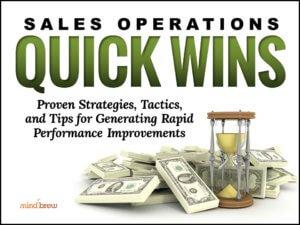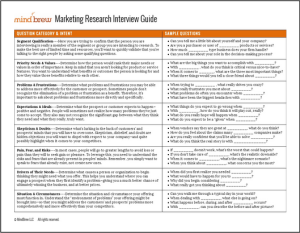We know of a B2B startup founder who once decided that the best way to make an impression on the auto industry execs he was meeting with for the first time would be to strike a casual tone and do something they would never expect.
So without discussing his plan with the rest of his team, he walked into the conference room and said, “Hey, how are you f***ers doin’ today?”
The meeting did not go well.
That’s a pretty obvious example of screwing up a sales pitch, but there are a lot of other ways to mess up that might be less obvious. Here are four of the most common problems we see in B2B sales pitches:
- Too clever. Your sales pitch doesn’t need to be as funny as a Super Bowl commercial to be effective. In fact, your sales pitch will probably be much more effective if you steer clear of jokes and puns entirely. Those kinds of techniques might work in an ad targeted at people much earlier in the funnel, but at the point where you are actively pitching your products to a qualified prospect, you need to show them how you are going to solve their problem. Don’t try to show them how smart and funny you are. Instead, demonstrate exactly what you can do for them and why your products are better than any other option.
- Form over function. If you’ve ever spent weeks debating whether your pitch should be a video or a PowerPoint presentation or a PDF or a Word document, you have a big problem. The same is true if a piece of content goes to the designer first before going to the copywriter. While good design can definitely help you make a good impression, it isn’t nearly as important as the message. Research has shown, time and time again, that the message is more important than the medium. Spend your time and energy on getting the message right, not on getting the format right.
- Not enough content. Oftentimes, people within a company will complain that their sales materials are too long and boring. “No one will read this!” they say. Those people are wrong. Unequivocally. Again, research has shown that buyers are far more likely to complain about too little content than too much. If they really have a problem, they want to read everything they can get their hands on about the topic. And if they aren’t reading your content, they will be reading someone else’s. Make sure you have enough “meat” to satisfy your buyers’ appetite for information.
- Failure to research. You might think you don’t need to research your market because you’ve been in the same business for thirty years. But we guarantee that if you did some actual research involving actual prospects, you would discover some things you never knew. And research doesn’t have to be hard or complicated. Just pick up the phone and call a couple people in your target market. A few minutes of conversation can give you much better insight into your customers’ needs. Take the time to do your homework before rushing ahead to craft your pitch.
If you haven’t examined your company’s sales pitches recently, you might want to review them, especially if they aren’t as effective as you would like. When sales pitches fail to convert, it’s all too easy for sales teams to fall into a trap blaming the product or marketing or pricing or the weather or anything else but the pitch they just made. But the truth is that if a pitch doesn’t work well, it’s probably the fault of the pitch.
For ideas on how to improve your pitch, check out Building a Better Sales Pitch. You might also want to watch Creating Compelling Content and read the tutorial on Step-by-Step Marketing Research for Strategic Selling.
And if you’ve already made some of these mistakes, we’d like to leave you with a little bit of hope. In the example at the beginning of the blog where the guy called a bunch of auto execs “f***ers,” the team was eventually able to salvage that deal by demonstrating how their product would solve some major problems for the automaker. Today, that startup generates tens of millions in revenue from that customer, even after such a terrible beginning.
Even if you’ve made missteps in the past, you just might be able to recover if you improve your pitch.













